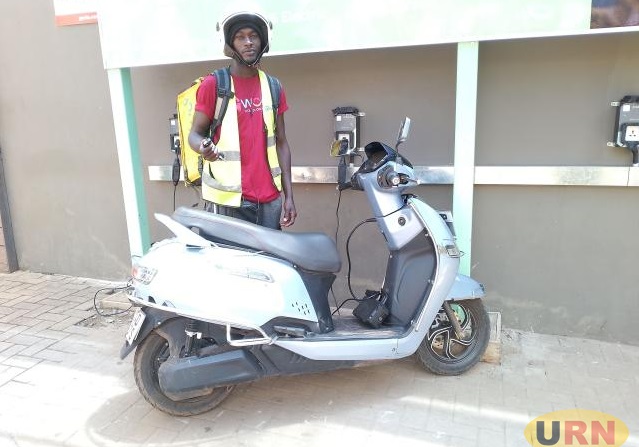More fuel stations start installing electric charging infrastructure


KAMPALA, UGANDA | THE INDEPENDENT | Uganda’s baby steps towards transition to electric mobility (e-mobility) is steadily getting more viable than ever, thanks to the expansion of charging infrastructure across the country. Shortage of charging facilities had earlier hindered Uganda’s shift to e-mobility.
This growth began with battery-swapping stations for electric motorcycles and has now evolved into a trend where many petrol stations incorporate e-mobility charging points. Some locations focus on motorcycles, while others serve both cars and bikes. The Ministry of Energy pioneered this movement by installing two EV-charging stations in front of its headquarters on Kampala Road in the heart of the capital.
Though the country planned to have installed at least 50 EV charging stations by 2025, the current trends speak differently, with charging points being quickly set up at shopping centers, offices, and residential complexes.
A manager of a big filling station in Kampala city, who requested anonymity due to company policy, confirmed that the number of vehicles utilizing these charging facilities has risen from near-zero over the past six months. “Previously, we would see one customer a week, but now it is almost one per day, especially for plug-in hybrids, we even have three Teslas that come to charge here,” he shared, noting that the station offers both AC and DC charging ports, allowing for both slow and fast charging options.
Currently, EV charging is provided at no cost, and vehicles typically require an hour to recharge during daytime visits. The manager also mentioned that two Italian motorcycle owners are among the most frequent two-wheeler clients at the station.
Bernard Kasirivu, an e-boda-boda rider, explained that he pays 89,000 shillings for acquisition per week to the company that financed his electric motorcycle. This weekly payment has become manageable thanks to the availability of charging points throughout the city. “I’m optimistic about completing the two-and-a-half-year loan, thanks to the multiple charging locations that ensure I never run out of power, after the 105 kilometres,” Kasirivu said.
Kasirivu’s supplying company has established charging points at various locations, including Total Wampewo, Motor Care Kitgum House, Nakasero Primary School, Nexus Green Nakawa, Mutungo Biina, Kitintale, and along Gayaza Road.
Uganda’s move towards e-Mobility poses significant step towards environmental sustainability and protection owing to the fact that vehicle emissions contribute to 42 percent of urban air pollution in Uganda.
Each e-bike prevents around 2.5 tons of carbon emissions annually unlike the pollutive traditional motorcycles, and saves on the fuel expenses, with battery life extending for 3-4 years, making it not only economical, but environmental friendly.
Despite costing higher than ordinary cars at the start, electric cars have been proven to save up to 70 Percent of operational costs from ordinary cars. Estimates show that it costs between 15,000 to 20,000 Shillings to charge a car for a 300 km range, based on Uganda’s current electricity tariffs. Yet an ordinary petrol uses between 100,000 to 200,000 shillings for the distance.
The potential health benefits are substantial. World Health Organization data indicates that air pollution in Kampala exceeds safe limits by at least 300 percent, contributing to respiratory diseases that cost the healthcare system 45 billion shillings annually. Electric mobility provides a direct solution; a single electric car can reduce annual carbon emissions by 4.6 tons compared to a petrol vehicle that pumps carbon into the air instead.
For individuals transitioning to electric bikes and electric cars, the road is clear. government’s recent 50% reduction in import duties on EVs, coupled with an expanding network of charging stations and local manufacturing efforts, which are making electric mobility a reality. By 2030, EV adoption in Uganda could be preventing 1.5 million tons of CO2 emissions, with early adopters leading the way.
The journey from electric bikes to fully electric cars, powered by renewable energy, signifies more than a personal transportation shift, it represents a commitment to a sustainable future for Uganda. Embracing solar-powered homes and electric vehicles is not only about financial savings; it’s an investment in cleaner air, improved health, and a resilient Uganda for generations to come.
******
URN
The post More fuel stations start installing electric charging infrastructure appeared first on The Independent Uganda:.






